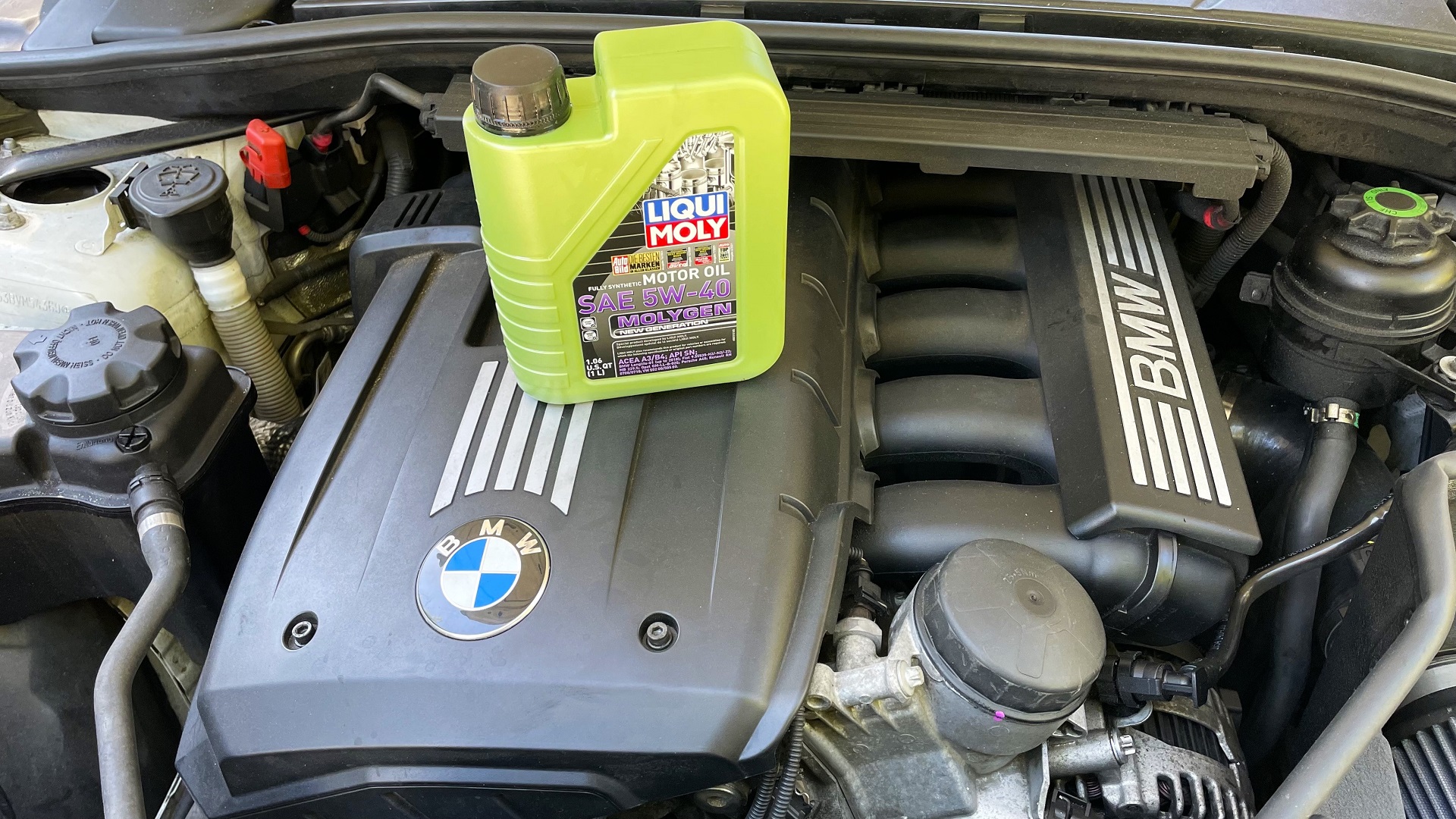

We may earn revenue from the products available on this page and participate in affiliate programs. Learn more ›
When it comes to determining and choosing an oil weight, none of it involves weight as we commonly think of it—there are no weight scales involved in weighing oil. Instead, in this circumstance, weight refers to the oil’s viscosity, which is a fluid’s resistance to flow. Generally speaking, the higher the viscosity, the slower it’ll flow, the lower the viscosity, the faster it’ll flow.
Oil weight is a critical detail of keeping your engine running as efficiently and reliably as possible, and the way it’s identified is a mixture of two rating variables. Let’s dive into what those two variables are, why they’re important, and why someone might consider deviating from their car’s recommended rating for their next oil change.
The Basics

In the 2001 action thriller The Fast and the Furious, there’s a short but memorable exchange of dialogue between the main antagonist, Johnny Tran, and his cousin Lance while they’re in their garage. “What are you feeling, Lance, 40 weight? Fifty weight?” Johnny asks. “Forty weight sounds nice,” Lance replies. Nevermind the fact that it’s a torture scene.
The common way that engine oils are measured and marketed in our modern era is with a two-part label outlined by The Society of Automotive Engineers (SAE): The first number is its cold startup viscosity indicated by a W (think winter), followed by a number for its hot or operating temperature viscosity. Some examples of common oil weights are 5W-30, 10W-40, 0W-30, and so on. These are known as multigrade oils.

To be more specific, cold startup viscosity is measured at -17.8 degrees Celsius (0 degrees Fahrenheit). This means if the engine has 0W-30 in it, it will flow with a viscosity rating of 0—which is quite thin—and will have maximum flow to critical components when the engine isn’t up to operating temperature. Lower cold-start viscosity numbers are ideal for climates that see cold winter temperatures, as it ensures the most flow when ambient temperatures are immensely lower than the engine’s operating temperature. The second number is its viscosity at 100 degrees Celsius (212 degrees Fahrenheit). Thus, with a 0W-30 oil, it will act as a 30-grade oil at hot or normal operating temperatures.
A higher number means it’ll resist thinning out too much at high temperatures, as well as maintain oil pressure. Typically, the higher that second number is, the better it’ll protect the engine’s internals in high-heat scenarios, especially when it comes to high-performance driving in autocross, at a track day, or in wheel-to-wheel racing. Though, some trade-offs include inhibiting performance and potentially having an adverse effect on oil-driven systems like variable valve timing.
When in Doubt, Check Your Owner’s Manual

The best oil to run is what’s recommended by your vehicle’s manufacturer. A quick way to figure this out is to check your owner’s manual, take a peek at your engine’s oil cap, or if you’re in a pinch at your local auto parts store, it’s usually easy to search on your phone.
Some manufacturers indicate a range of approved weights, which usually has to do with your climate. If you live in a warmer climate in the Southwest, cold temperature starts aren’t as much of a concern. If you live in the Midwest, the lower the winter rating is more crucial. Conversely, driving in hot weather and climates can really test an engine’s cooling system, in which case a higher second number is worth considering.
Typically, modern engines, especially turbocharged variants, will take a thinner oil, as their tighter tolerances require a thin oil to pass through them. In my own situation, my 2014 Mazda 2 took 0W-20, whereas my 2011 BMW 128i takes OW-30, 0W-40, 5W-30, or 5W-40—I err on the heavier side for maximum protection in the warm climate I live in.
Additionally, it’s a good idea to pay close attention to what type of oil your manufacturer recommends. This could mean full-synthetic, synthetic blend, BMW Long Life, GM Dexos2, or any other wording to look for when choosing your oil. When in doubt, popular, well-rated online retailers will have a selection of the right oils for your car. In my case, I take comfort in knowing FCP Euro, BimmerWorld, and Turner Motorsport have the best-possible oil choices for my BMW.
Do Your Research

If you’re considering running an oil that’s outside of the manufacturer’s recommendation, it’s important to do your research, make sure your sources are legitimate, and be ready for the risk. This is usually a consideration when high performance is important, such as in road racing, drag racing, autocross, and track days.
There’s an endless amount of discussion on enthusiast forums about what the best oil viscosity is for a particular platform, where it’s driven, and how it’s driven, and it can get quite confusing. Again, when in doubt, run what your manufacturer says your engine was designed to run.
In my own situation, I run 5W-40 full synthetic, as the 40 weight indicates it’ll hold up better in higher temperatures, and it’s commonly accepted among enthusiasts and automotive professionals as a sturdier alternative to 5W-30, but not radically heavier.
Some folks might state that high-viscosity oils will cut down on oil consumption, however there’s a myriad of factors that contribute to oil consumption. Others say that zinc additives are a cure-all for internal engine ailments, though zinc is unfriendly to a lot of modern cars’ catalytic converters. A common opinion is heavy, non-synthetic oil will cause fewer leaks, but there’s more to oil leaks than just the thickness of oil that’s passing through them. When in doubt, the correct weight and type that’s changed on time is always the best bet.